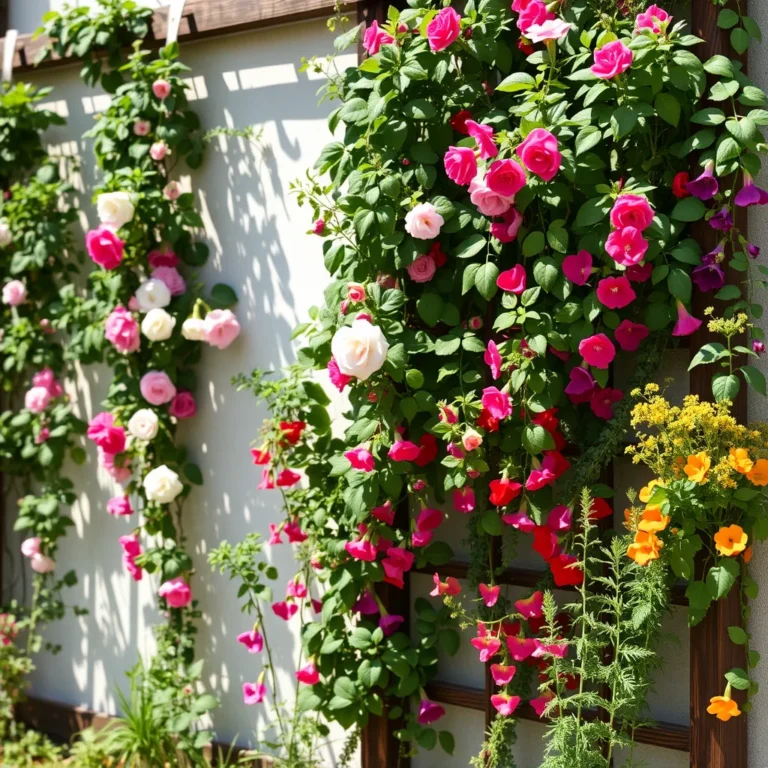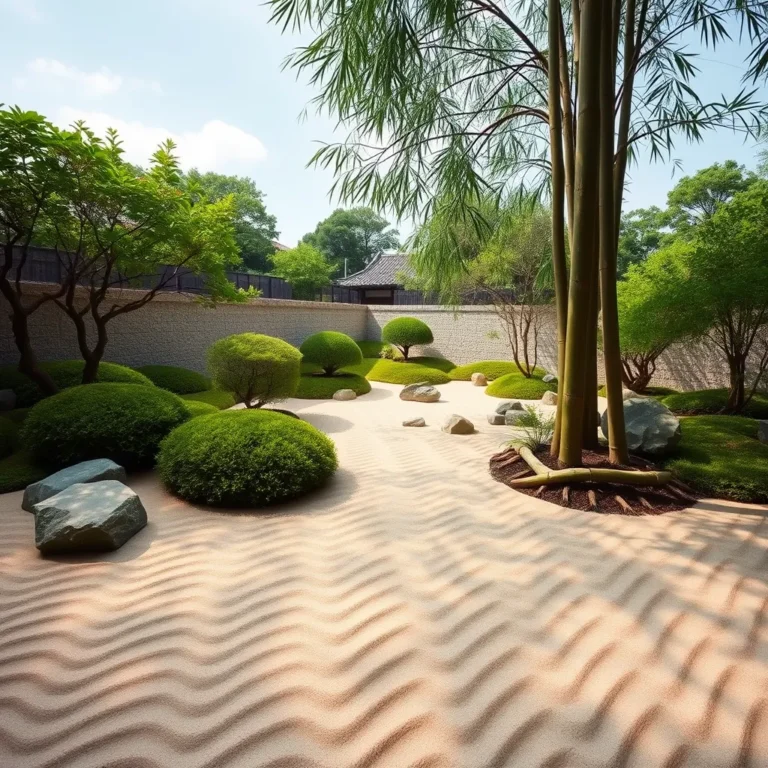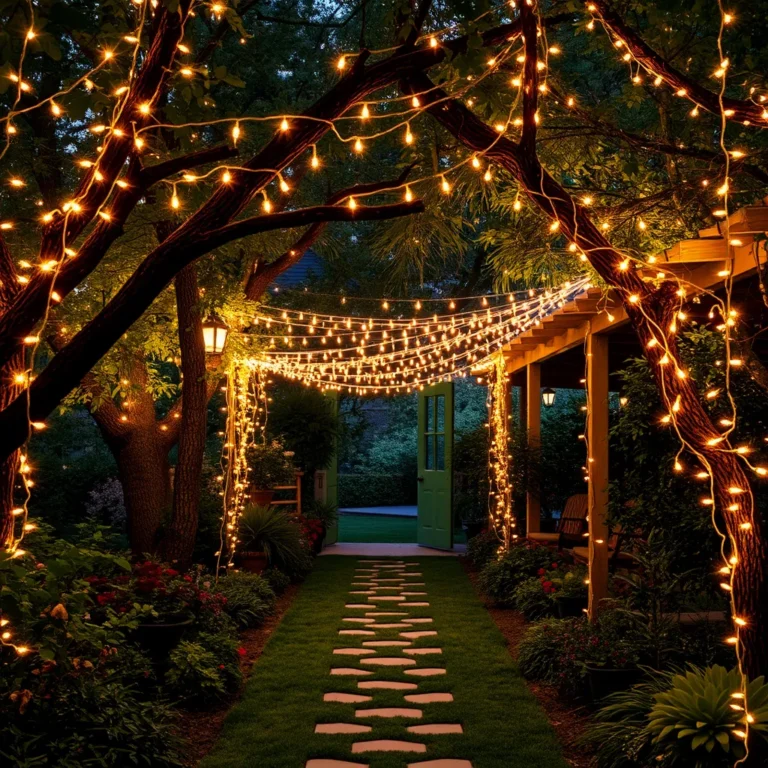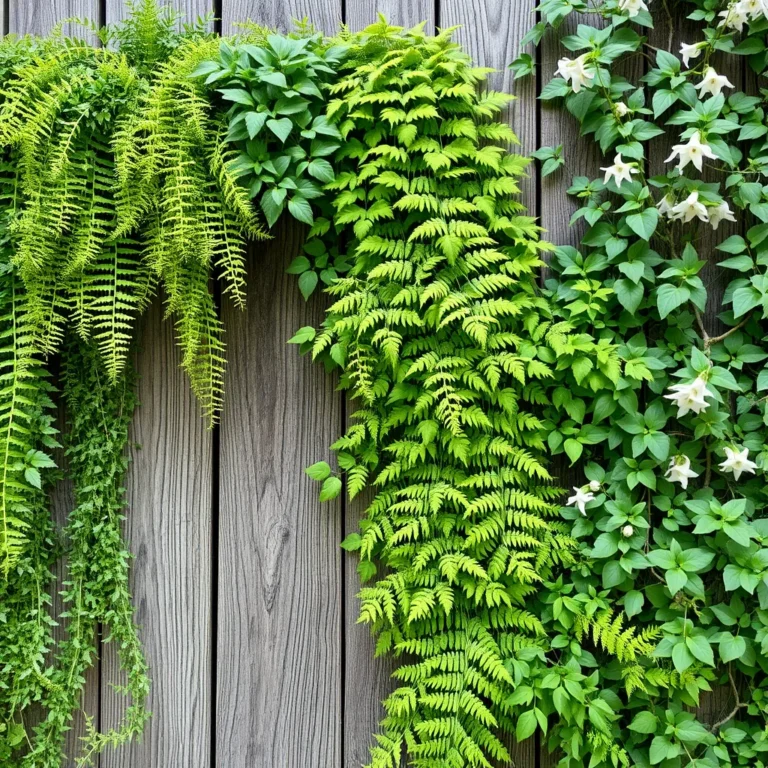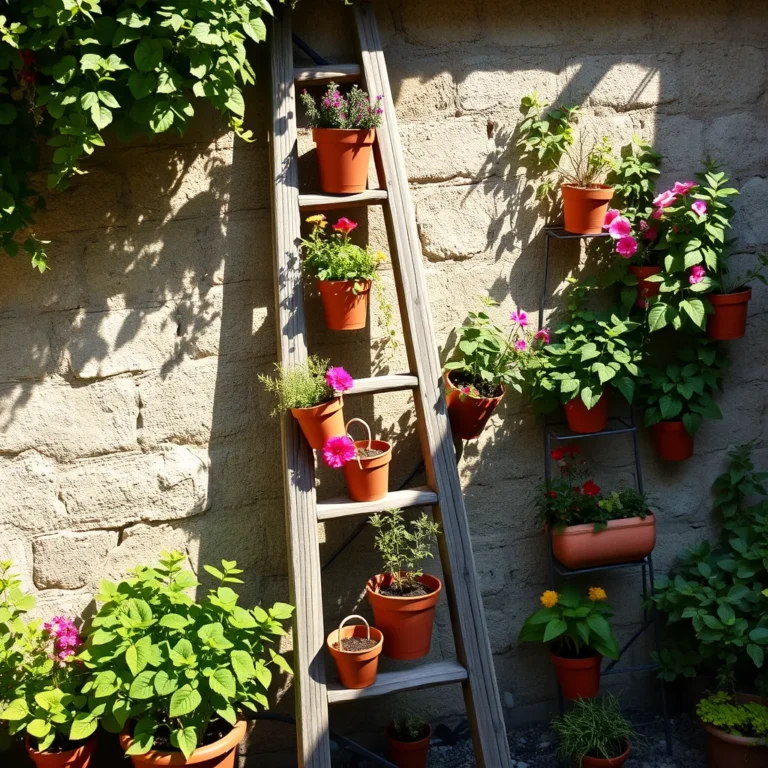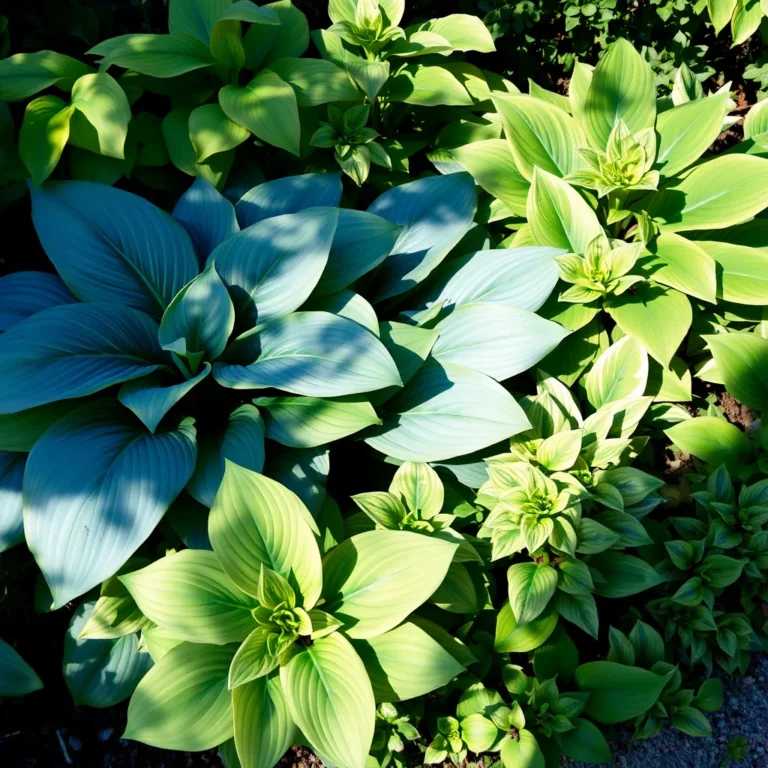7 Backyard Flower Garden Ideas for a Vibrant Space
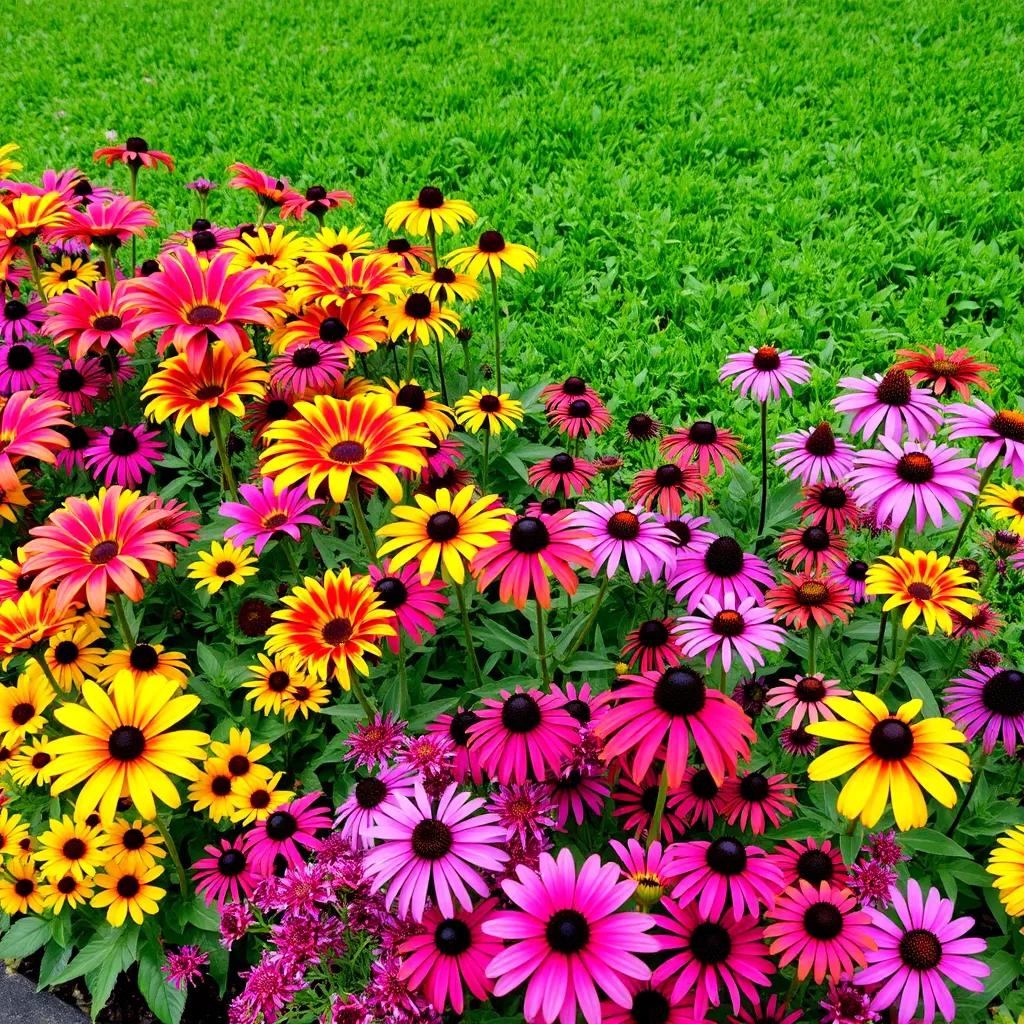
Transforming your backyard into a vibrant flower garden is easier than you think! In this post, I’ll share seven inspiring ideas that will help you create a stunning outdoor space. From colorful perennial beds to edible flower gardens, there’s something for everyone. Whether you have a small yard or plenty of room, these tips will add beauty and life to your garden. Let’s dig in and get your flowers blooming!
Colorful Perennial Flower Beds: Choosing the Right Plants for Your Climate and Soil

To make a colorful perennial flower bed, start with your climate. Know if you live in a warm or cool area. This will help you pick the right flowers. For warm climates, consider plants like daylilies and black-eyed Susans. These will thrive and bloom for years.
Next, check your soil type. Is it sandy, clay, or loamy? Different plants need different soil. If your soil is heavy clay, add compost. This helps with drainage and nutrition. For sandy soil, mix in organic matter to hold water better.
Plant in groups for color impact. Choose three to five plants of the same type. This creates a vivid look. You can mix heights, too. Tall plants like coneflowers can stand behind shorter ones like daisies. This adds depth and interest to your garden.
Consider bloom times. Some flowers bloom in spring, while others bloom in summer or fall. This way, your garden stays lively all year.
Vertical Flower Garden Walls: A Creative Space-Saving Solution for Small Backyards

If you have a small backyard, vertical flower garden walls are a great choice. They save space while adding beauty. You can use wooden pallets or metal frames to create a wall. This gives your garden a unique look.
Select flowers that grow well in vertical spaces. Climbing plants like sweet peas or morning glories work well. They can climb up the wall and create a stunning display.
Make sure to water your vertical garden regularly. The plants may dry out faster. You can use a drip irrigation system to help. This keeps your plants healthy without much effort.
Add decorative pots to your wall for extra style. You can mix flowers with herbs to have both beauty and function.
Mixed-Color Annuals: Tips for Creating a Bright and Cheerful Flower Patch

Annuals are perfect for a bright flower patch. They bloom all summer and give instant color. Start by picking a variety of colors. Think reds, yellows, and purples. This mix creates a cheerful vibe.
Plan your layout before planting. Place taller flowers in the back and shorter ones in front. This makes sure every flower gets sunlight.
Choose flowers that bloom at different times. This way, your patch stays colorful. Plant zinnias for summer, and add pansies for spring.
Water your mixed-color patch regularly. Annuals need more water than perennials. Use mulch to help keep the soil moist. This keeps your flowers looking their best.
Fairy Tale Fantasy Garden: Incorporating Unique Plants and Decorative Elements

Creating a fairy tale fantasy garden is fun and magical. Start by choosing unique plants. Look for flowers with interesting shapes and colors. For example, try foxgloves or bleeding hearts. They add a whimsical touch.
Next, add decorative elements. You can use garden gnomes, fairy houses, or colorful stones. These items spark joy and invite imagination. Place them among the flowers for a charming scene.
Consider adding small pathways. Use stepping stones or gravel to create a path. This guides visitors through your garden and makes it feel like a storybook adventure.
Lastly, don’t forget about lighting. String lights or lanterns can create a cozy feel at night. This makes your garden shine and look enchanting after sunset. Enjoy your fairy tale garden; it can be a dreamy escape!
Pollinator-Friendly Flower Gardens: Selecting Flowers that Attract Bees and Butterflies

To create a pollinator-friendly garden, choose flowers that attract bees and butterflies. Good options include coneflowers, lavender, and sunflowers. These flowers provide food for these important insects.
Plant in groups. This makes it easier for bees and butterflies to find the flowers. Aim for a mix of colors and shapes to keep it lively.
Provide a water source. A shallow dish with stones can help. Pollinators need water, and this small addition goes a long way.
Avoid pesticides. They can harm bees and butterflies. Instead, use natural methods to protect your plants. With these tips, you can create a thriving ecosystem in your backyard.
Edible Flower Gardens: Combining Beauty and Functionality with Colorful Edibles

Edible flower gardens are both beautiful and useful. Start with flowers like nasturtiums and pansies. They add color and can be eaten in salads.
Mix these flowers with herbs. Basil and mint not only smell great but also attract pollinators. This creates a lively and tasty garden space.
Make sure to check if flowers are safe to eat. Some flowers may look nice but can be toxic. Always do your research before adding new plants.
Lastly, use the blooms in your cooking. Add them to drinks or desserts for a pop of color. Enjoy the beauty and flavor of your edible flower garden!
Seasonal Flower Rotations: Strategically Planning Blooms Throughout the Year

Seasonal flower rotations keep your garden lively. You can plan blooms for spring, summer, fall, and winter. Each season offers unique flowers. For spring, consider tulips and daffodils. They bring bright colors after winter. In summer, plant sunflowers and zinnias for a cheerful vibe.
Switch flowers as the seasons change. In fall, add mums and asters for warm tones. Winter can be tough, but you can use evergreens for color. This plan makes sure your garden looks great all year long.
Themed Flower Arrangements: Crafting a Cohesive Look with Color and Texture

Themed flower arrangements give your garden a special touch. You can choose colors that match your home. For a calming space, go with blues and whites. For energy, use reds and yellows. Mixing textures makes the look more interesting. Try tall flowers with shorter ones for depth.
You can also match flowers with decorative elements. Use stones or garden sculptures that fit your theme. This adds character and makes your space feel complete.
Raised Flower Beds: Benefits and Tips for Building Your Own Garden Boxes

Raised flower beds are a great way to garden. They offer better control over soil quality. You can fill them with the best soil for your flowers. They also drain well, which helps prevent root rot.
Building a raised bed is easy. Use wood or bricks to create a box. Fill it with soil and compost. Make sure it gets enough sunlight. You can plant flowers right away! Raised beds also keep flowers safe from some pests. This makes gardening fun and rewarding.
Flowering Ground Covers: Choosing Low-Maintenance Plants for a Lush Look

Flowering ground covers are great for filling empty areas in your yard. They grow low to the ground and add color. I love using these plants because they need less care than regular flowers. Some good options include creeping thyme, phlox, and ajuga. They bloom all season and stay green too.
When you pick your plants, think about your soil and sunlight. Some ground covers like full sun, while others do better in shade. Make sure to plant them close together. This helps them spread and cover the ground faster.
You can also mix different colors and types. This will make your garden look lively and fun. Plus, these plants help keep weeds away. A lovely ground cover can change your yard into a bright and cheerful space.
Garden Pathways: Designing Beautiful Walkways to Enhance Flower Visibility

Creating pathways in your flower garden can make it more inviting. A nice path lets you walk through your flowers easily. You can use stones, wood, or even bricks for your walkways. I usually like to choose materials that match my home’s style.
Your path should lead to key spots in your garden. Think about where you want people to stop and enjoy the view. Place the path near the best flower displays. This way, everyone can see the blooms up close.
Adding curves to your path can make it look more natural. Straight lines can feel stiff. Curves help guide the eye and draw people in. Don’t forget to line your path with flowers or plants. This will create a cozy feel and enhance the beauty of your garden.
Water Features in Flower Gardens: Installing Fountains or Ponds for Serenity

Water features bring a calm vibe to your flower garden. Adding a fountain or pond can make your space feel more peaceful. I love the sound of water gently flowing. It adds a nice touch while also attracting birds.
When choosing a water feature, think about its size. A small fountain can fit well in a tight space. If you have room, a pond can be a stunning focal point. Surround it with flowers to make it blend in.
Make sure to keep the water clean. This keeps your feature looking nice and fresh. You can also add fish or plants in the water. They add life and color to your garden. A water feature can transform your backyard into a serene retreat.
Maintenance Tips for Thriving Flower Gardens: Watering, Pruning, and Fertilizing

Taking care of your flower garden makes it thrive. You need to water, prune, and fertilize correctly.
Watering is key. Flowers need deep watering. Water them early in the morning or late in the day. This helps the roots soak well. Always check the soil. If it feels dry, it’s time to water.
Pruning helps your flowers grow better. Remove dead or wilted blooms. This encourages new growth. Use sharp scissors for clean cuts. Make sure to prune at the right time for each type of flower.
Fertilizing gives flowers the nutrients they need. Use a balanced fertilizer. Apply it every month during the growing season. Follow the package instructions for best results. Too much can harm your plants, so be careful.
Keeping an eye on your garden will help it bloom beautifully. Regular care keeps your flowers healthy and colorful.
Container Flower Gardening: Creative Ideas for Adding Flowers in Pots

Container gardening is fun and easy. You can plant flowers in pots anywhere. Use colorful pots to brighten up your space.
Choose the right size pot for your flowers. Bigger pots hold more soil and water. This helps plants grow strong.
Mix different flowers for a vibrant look. Use tall flowers in the back and shorter ones in front. This creates depth and interest.
Try herbs in your container garden too. They smell great and look lovely. Basil, mint, and rosemary are great choices.
Place your pots in sunny spots. Most flowers need at least six hours of sunlight daily. Move pots around if you see them struggling.
Container gardening gives you style and color in your yard. It’s a perfect way to add flowers without needing a big space.
DIY Flower Garden Decorations: Simple Projects to Personalize Your Garden Space

Get creative with DIY decorations for your garden. Simple projects can make your space unique and fun.
Start with painted rocks. Use bright colors to make them pop. Place them around your flowers as a cheerful touch. You can even write fun words on them.
Another idea is to make flower markers. Use old spoons or wooden sticks. Write the flower names on them. Stick them in the ground next to each plant.
You can also create a flower trellis. Use wood or metal to build a simple frame. This helps climbing flowers grow up and adds height to your garden.
Hanging flower baskets are another great DIY project. You can use old baskets or buckets. Fill them with flowers that spill over the sides. Hang them from hooks around your yard.
These DIY decorations will make your garden feel special. Each project adds personality and charm to your flower space.
Conclusion
In this article, we explored many ways to create beautiful flower gardens. We looked at colorful perennial flower beds and vertical garden walls for small spaces. Tips on mixed-color annuals helped you plan for cheer and brightness. Unique plants made fairy tale gardens fun, while pollinator-friendly blooms drew in bees and butterflies. Seasons matter; rotating flowers ensures year-round color. We also discussed raised beds, ground covers, and how to add serene water features. With simple maintenance tips, your garden can thrive. Try these ideas to make your garden both lovely and unique.

